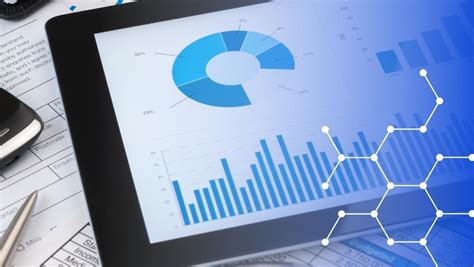In the intensely competitive and data-driven landscape of modern business, the ability to anticipate future sales trends, identify high-potential leads, and forecast revenue with accuracy is no longer a luxury but a fundamental necessity. Traditional sales reporting, which primarily focuses on past performance, provides valuable insights but often falls short in offering the forward-looking intelligence crucial for strategic decision-making. This is where Predictive Sales Dashboards emerge as revolutionary tools. These advanced dashboards leverage sophisticated analytical techniques, including artificial intelligence (AI) and machine learning (ML), to analyze historical sales data, market trends, customer behavior, and various other variables to forecast future sales outcomes.
By transforming raw data into actionable foresight, predictive sales dashboards empower sales teams and leaders to make proactive decisions, optimize strategies, allocate resources effectively, and ultimately drive sustainable revenue growth. For businesses operating in dynamic markets, understanding future sales potential is key to maintaining a competitive edge. This article will delve into the critical importance of predictive sales dashboards, explore their core components and powerful benefits, detail the essential features that define effective predictive dashboards, address the significant challenges in their implementation, and envision their transformative impact on the future of sales and business strategy.
The Critical Importance of Predictive Sales Dashboards

The imperative for adopting predictive sales dashboards is driven by the dynamic nature of sales and the need for proactive strategic decision-making.
- Accurate Sales Forecasting: Predictive dashboards provide more precise revenue forecasts than traditional methods, enabling better financial planning, resource allocation, and inventory management. This accuracy is vital for maintaining healthy cash flow and operational efficiency.
- Proactive Lead Prioritization: By identifying leads with the highest propensity to convert, sales teams can focus their efforts on the most promising opportunities, significantly improving conversion rates and sales efficiency.
- Optimized Sales Strategies: Insights from predictive dashboards allow sales leaders to adapt and refine their strategies in real-time, focusing on what works and quickly adjusting to market changes or emerging challenges.
- Improved Sales Performance and Productivity: Equipping sales representatives with data-driven insights into customer behavior and potential sales outcomes helps them tailor their approach, leading to higher close rates and increased individual productivity.
- Enhanced Customer Relationship Management (CRM): Predictive insights enable sales teams to anticipate customer needs, identify churn risks, and personalize interactions, leading to stronger customer relationships and improved retention.
- Better Resource Allocation: Understanding where future sales opportunities lie helps organizations allocate sales personnel, marketing spend, and other resources more effectively to maximize return on investment.
- Competitive Advantage: Organizations that leverage predictive analytics gain a significant edge by being able to anticipate market shifts, identify emerging trends, and outmaneuver competitors who rely solely on historical data.
- Reduced Sales Cycle Length: By streamlining the sales process through intelligent lead scoring and targeted interventions, predictive dashboards can help shorten sales cycles, leading to quicker revenue generation.
- Data-Driven Decision Making at All Levels: Predictive dashboards democratize access to powerful insights, allowing sales managers, individual reps, and even marketing teams to make more informed, data-backed decisions.
Core Components and Powerful Benefits of Predictive Sales Dashboards
Predictive sales dashboards are complex tools built upon several critical components, each contributing to their overall effectiveness and the benefits they deliver.
Data Integration and Aggregation
- Unified Data Sources: Collects and integrates data from various systems, including CRM (e.g., Salesforce), ERP, marketing automation platforms, customer service systems, and external market data, to create a holistic view.
- Data Cleansing and Transformation: Processes raw data to remove inconsistencies, errors, and redundancies, ensuring the accuracy and reliability of the information fed into the predictive models.
Predictive Analytics Engines (AI/ML)
- Machine Learning Algorithms: Utilizes advanced algorithms (e.g., regression analysis, classification, neural networks) to identify complex patterns and relationships within the integrated data, predicting future outcomes.
- Proprietary Models: Many dashboards incorporate proprietary predictive models specifically designed for sales forecasting, lead scoring, and customer churn prediction, continuously learning from new data.
Interactive Visualization and Reporting
- Intuitive Dashboards: Presents complex data and predictions through user-friendly, visually engaging dashboards with charts, graphs, and key performance indicators (KPIs) that are easy to understand.
- Customizable Views: Allows users to customize the dashboard views, filters, and reports based on their specific roles, responsibilities, and analytical needs.
Lead Scoring and Prioritization
- Behavioral Scoring: Assigns scores to leads based on their online behavior, engagement with marketing materials, demographic information, and historical conversion patterns, indicating their likelihood to convert.
- Predictive Lead Prioritization: Automatically ranks leads, directing sales teams to focus on those with the highest potential value and shortest sales cycle, improving sales efficiency.
Sales Forecasting and Pipeline Analysis
- Revenue Prediction: Provides accurate forecasts for future sales revenue based on various factors, including historical sales, pipeline health, market conditions, and sales team performance.
- Pipeline Health Metrics: Offers real-time insights into the sales pipeline, identifying potential bottlenecks, opportunities for acceleration, and risks to projected revenue.
Churn Prediction and Customer Retention
- Risk Identification: Predicts which existing customers are at risk of churning by analyzing their usage patterns, support interactions, and engagement levels.
- Proactive Interventions: Enables proactive outreach and tailored retention strategies to at-risk customers, significantly improving customer lifetime value.
Opportunity Sizing and Deal Conversion Probability
- Value Assessment: Estimates the potential value of each sales opportunity and its likelihood of closing, helping sales reps prioritize their efforts.
- Strategic Guidance: Provides insights into the factors influencing deal conversion, enabling sales professionals to adjust their strategies for better outcomes.
Performance Benchmarking and Goal Setting
- KPI Tracking: Monitors key sales performance indicators against targets and benchmarks, providing insights into individual and team performance.
- Realistic Goal Setting: Supports the setting of more realistic and achievable sales targets based on predictive insights, fostering motivation and accountability.
Essential Features Defining Effective Predictive Sales Dashboards
For a predictive sales dashboard to truly empower a sales organization, it must embody a set of robust and user-centric features.
- Real-Time Data Refresh and Updates:
- Instant Insights: Ensures that the dashboard continuously updates with the latest sales activities, market data, and customer interactions, providing real-time insights for immediate decision-making.
- Dynamic Adjustments: Allows the predictive models to dynamically adjust forecasts and lead scores as new data becomes available, reflecting the most current situation.
- Customizable Reporting and Drill-Down Capabilities:
- Tailored Views: Provides flexibility for users to create custom reports, filter data by various dimensions (e.g., region, product, sales rep), and drill down into specific data points for deeper analysis.
- Granular Insights: Enables managers to analyze performance at individual, team, or regional levels, identifying strengths, weaknesses, and areas for improvement.
- Actionable Alerts and Notifications:
- Timely Warnings: Generates automated alerts for critical events, such as a high-value lead engaging with competitor content, a customer showing churn indicators, or a significant deviation in sales forecast.
- Proactive Engagement: Empowers sales teams to take immediate action on high-priority opportunities or risks, improving responsiveness and effectiveness.
- Integration with CRM and Sales Tools:
- Seamless Workflow: Integrates seamlessly with existing CRM systems (e.g., Zoho CRM, popular in Indonesia) and other sales enablement tools, preventing data silos and ensuring a unified view of customer interactions.
- Automated Data Flow: Facilitates automated data transfer between systems, reducing manual data entry and improving data accuracy.
- User-Friendly Interface and Intuitive Navigation:
- Ease of Use: Features a clean, intuitive design that is easy to navigate, reducing the learning curve for sales professionals who may not be data scientists.
- Accessibility: Ensures that the dashboard is accessible across various devices (desktop, tablet, mobile), allowing sales teams to access critical insights on the go.
- Scenario Planning and What-If Analysis:
- Simulate Outcomes: Allows users to run “what-if” scenarios by adjusting key variables (e.g., marketing spend, pricing, sales rep count) to understand their potential impact on sales forecasts and outcomes.
- Strategic Planning: Supports better strategic planning by enabling leaders to evaluate different tactical approaches and their projected results before implementation.
- Granular Prediction Metrics (e.g., conversion probability by stage):
- Detailed Insights: Provides specific probabilities for conversion at each stage of the sales funnel, helping sales reps understand where to focus their efforts and what obstacles to address.
- Optimized Funnel Management: Supports the optimization of sales funnel stages based on data-driven insights into conversion rates and bottlenecks.
- Security and Data Governance:
- Data Protection: Implements robust security measures, including access controls, encryption, and compliance with data privacy regulations (e.g., GDPR, local Indonesian data laws), to protect sensitive sales and customer data.
- Role-Based Access: Ensures that different users have access only to the data and features relevant to their roles, maintaining data integrity and confidentiality.
- Scalability and Performance:
- Growing Data Volumes: Capable of handling increasing volumes of sales data and growing user bases without compromising performance or accuracy.
- High Performance: Provides fast loading times and quick data processing to ensure a smooth user experience, even with complex analyses.
The Future Trajectory of Predictive Sales Dashboards

Predictive sales dashboards are at the forefront of sales technology, constantly evolving to offer even more sophisticated and integrated capabilities.
- Hyper-Personalization and Prescriptive Analytics: Future dashboards will not only predict but also prescribe specific actions for sales reps, offering highly personalized recommendations on what to sell, to whom, when, and how, based on individual customer context.
- Enhanced AI and Deep Learning Integration: More advanced AI and deep learning models will enable even more nuanced predictions, identifying subtle patterns in unstructured data (e.g., call transcripts, email content) to provide richer insights.
- Voice and Conversational AI Integration: Sales dashboards will integrate more deeply with conversational AI and voice assistants, allowing sales reps to query data and receive real-time predictions through natural language, making insights even more accessible.
- Real-Time Omni-Channel Analytics: Dashboards will offer a consolidated, real-time view of customer interactions across all channels (web, social, email, phone, in-person), providing a complete picture for predictive modeling.
- Integration with Extended Reality (XR) for Immersive Insights: Augmented Reality (AR) and Virtual Reality (VR) could be used to create immersive sales dashboards, allowing sales leaders to visualize complex data in 3D and interact with it in new ways.
- Predictive Analytics for Customer Lifetime Value (CLTV) Optimization: Dashboards will increasingly focus on predicting and optimizing customer lifetime value, guiding sales and marketing efforts toward long-term customer relationships rather than just one-time sales.
- Automated Insights and Narrative Generation: AI will automatically generate clear, concise narratives from complex data, explaining key trends, predictions, and recommended actions, making insights more digestible for all users.
- Ethical AI and Bias Mitigation: Future dashboards will incorporate more robust mechanisms for identifying and mitigating algorithmic bias, ensuring fair and equitable predictions across diverse customer segments.
- Integration with Supply Chain and Operations Data: Deeper integration with supply chain, inventory, and operations data will enable more holistic predictions, informing sales strategies based on product availability and delivery capabilities. This can be crucial for businesses in Indonesia dealing with diverse supply chains.
- Self-Learning and Autonomous Optimization: The predictive models within dashboards will become increasingly self-learning, continuously improving their accuracy and adapting to new data patterns with minimal human intervention.
Conclusion
Predictive Sales Dashboards are transforming the sales function from a reactive process to a proactive, data-driven engine for growth. By providing unprecedented foresight into customer behavior, market trends, and future revenue, these powerful tools empower sales organizations to optimize every stage of the sales cycle, from lead generation and qualification to conversion and retention. While challenges related to data quality, technological adoption, and the need for specialized expertise must be addressed, the strategic advantages of leveraging predictive analytics are undeniable.
As AI and machine learning continue to advance, predictive sales dashboards will become even more sophisticated, offering hyper-personalized insights and driving truly intelligent sales strategies. Embracing these technologies is not just about staying competitive; it’s about fundamentally reshaping how businesses approach sales, ensuring sustainable revenue growth and fostering stronger, more profitable customer relationships in a globalized and increasingly data-centric world. For businesses everywhere, including those navigating the unique market dynamics of Semanu and the Special Region of Yogyakarta, Indonesia, predictive dashboards offer the key to unlocking future sales success.














